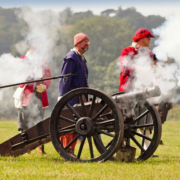For autonomous vehicles to successfully navigate myriad road obstacles, AI must be constantly trained to accurately perceive real-world 3D objects for what they are — traffic cones, pedestrians, electric scooters, etc. In order to do so, 2D images and video collected by sensor cameras must be refined and then annotated into 3D cuboid training data, which autonomous vehicle AI systems can leverage to become more intelligent. (This same method of creating 3D cuboid training data is also useful for teaching perception to AI in the field of robotics.) With cuboid annotation, drawings are first done manually and then calibrated for greater precision through a dynamic mathematical process that provides full 3D data for each cuboid. It’s an interesting process, and here’s a look under the hood at how it works.
Manual Cuboid Annotation
Manually annotating 2D images requires, rather simply, drawing boxes representing two sides of a cuboid around an object, like so:












Laisser un commentaire
Participez-vous à la discussion?N'hésitez pas à contribuer!